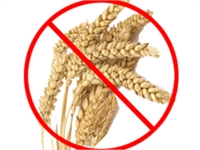
Home Remedies for Celiac Disease
Important Notice: Our web hosting provider recently started charging us for additional visits, which was unexpected. In response, we're seeking donations. Depending on the situation, we may explore different monetization options for our Community and Expert Contributors. It's crucial to provide more returns for their expertise and offer more Expert Validated Answers or AI Validated Answers. Learn more about our hosting issue here.

Home Remedies for Celiac Disease
You must be logged in to post a comment.
If you or someone you love has been diagnosed with Celiac disease, you might have been left with some questions about what to do next. The bad news is that it cannot be cured. The good news is that it can be managed and the symptoms can be completely reversed, if you are diligent.
What is Celiac disease?
Simply put, a person with Celiac disease has an autoimmune disorder. If you have it, you cannot process a protein called gluten. Your body reacts to the consumption of gluten as if it were an invader, and the attacks result in damage to your small intestine. Since your small intestine is where you absorb most of your nutrition, this can cause many health issues.
The most common symptoms of Celiac disease are:
Many people are gluten-intolerant and don’t even know it. If left untreated, the symptoms above may manifest, as well as the following:
The treatment is prevention
While the title of this article implies that there may be some alternative treatments, the truth is that your only choice is to avoid gluten at all costs, for the rest of your life.
While you are weaning yourself off of gluten products, you may want to avoid dairy, as well. Many people with Celiac disease are also sensitive to lactose, a sugar found in dairy products. After you eliminate gluten and start feeling much better, you may try to slowly reintroduce dairy products and see if they still affect you. You may find that getting rid of the gluten enables you to process lactose.
What is gluten?
As we saw above, gluten is a type of protein. It is the pasty, gooey part of grains, particularly found in wheat, rye, barley, and some oat products. It’s what makes bread doughy and pasta sticky. It’s not a coincidence that it has the word sound “glue” in it.
Avoid these hidden glutens:
While obvious foods, such as bread and pasta, should be avoided at all costs, there are many other places that gluten hides. Avoid the following products, which contain wheat and/or gluten:
Restaurant Warnings
As a celiac, dining out becomes an adventure. While you may make a veggie omelet at home using nothing but eggs and veggies, some restaurants use things like pancake batter to fluff up their version of the same thing. Always ask your server for the gluten-free version.
Avoid ANYTHING that is deep-fried. It’s all fried in the same oil, so you get the benefits of all that breading, even if the item you ordered isn’t breaded.
The best rule of thumb is to always be on guard. If it does not say “gluten free” on the menu, assume it isn’t, and ASK!
Restaurant foods to be wary of:
Other names for gluten
Gluten and/or wheat products masquerade under different names. When reading ingredients on packaged food, watch out for these phrases:
So, what CAN you eat?
Luckily, there are now many more clearly-labeled gluten-free foods on the market than ever before, and more are coming. Most natural food stores and many grocery chains now offer a gluten-free section. The best way to play it safe is to eat as organic and raw as possible. Avoiding all those fillers in packaged foods means you aren’t getting all the hidden ingredients listed above (or others, such as MSG and extra salt).
Safe foods include:
Check out the Celiac Disease Foundation’s Gluten-free resource directory at http://cdfresourcedirectory.com/ for a comprehensive list of brands and products that are gluten-free.
You are not alone
Approximately 1 in 100 people suffer from Celiac disease, and many are still undiagnosed. Studies show that cases may be higher within different ethnic groups, but these studies are ongoing.
Fortunately, awareness is increasing and there are now many support groups and resources available to you. Check out some of the resources below, or use your favorite search engine to look up gluten-free products and/or Celiac disease. You’ll even find several cookbooks at your local bookstore or natural foods store. You can control your Celiac disease and live a longer, healthier life.